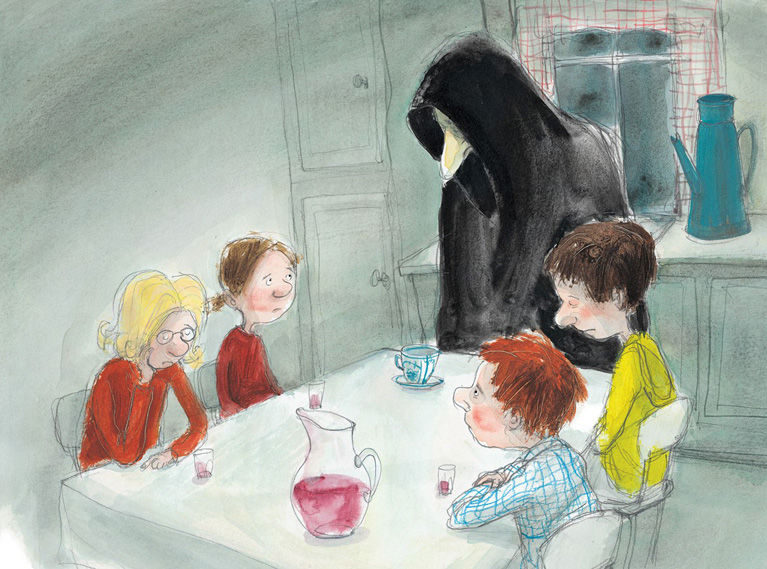
A beautiful and touching children’s book has recently been written by Danish author Glenn Ringtved, which explains death with great tenderness.
In Ringtved’s story, the tall, angular, black-robed figure Death has come to take the grandmother of four little children. The children are aware of Death’s mission and try to stall him, but Death cannot be long deterred.
Yet, with deep compassion Death sits with the children and explains to them that life’s joys and delights are enhanced when we experience them in contrast to life’s sadnesses and sorrows.
Then, as Death opens a window and urges the soul of their grandmother to fly away, he says gently to the children, “Cry, heart, but never break. Let your tears of grief and sadness help begin new life.”
From these words of consolation, Ringtved took the title for the book, “Cry, Heart, But Never Break.”
That phrase was actually spoken years before by Ringtved’s own mother to his children, when her death was near. It was her way of saying to her grandchildren that the pains and losses of life are inevitable and must be enfolded into the whole of life where they will not shatter it but bring it greater depth and beauty.
Is that a perspective you’ve taken on death? It’s not the only perspective available because not all death is quiet or peaceful or fitting or easy to accept. As clergy we have the privilege of accompanying family members as they grieve the loss of loved ones, and we learn so much from them. Some fight death with every ounce of their being. Some fear it or resent it. Some are angered by it or feel cheated by it. Yet, we have witnessed again and again that the tears of those touched by death can eventually become seeds of new beginnings. We’ve seen that the sorrow and pain of loss can, in time, be transformed into gratitude for all that has been, and hope for all that is yet to be.
And so death is not always and only a destroyer, or a robber, or a diminisher. The sorrow death leaves in its wake can be a transformative teacher. As poet Robert Browning Hamilton once wrote: “I walked a mile with Pleasure; She chatted all the way; But left me none the wiser, For all she had to say. I walked a mile with Sorrow; And ne’er a word said she; But, oh! The things I learned from her, When Sorrow walked with me.”
Perhaps death, and the sorrow it brings, has touched your life. You may or may not have experienced death’s coming then as the gentle release from life that Ringtved’s book envisions. You may or may not have felt your sadness to be the pensive teacher Hamilton describes. Yet, death is but a piece of life’s puzzle, not its ultimate meaning. In fact, faithful people have long proclaimed that death, so inescapable and so difficult, is nevertheless overpowered. For neither life nor death nor anything else in all creation can separate us from the love of God.
So cry, heart, but never break.



